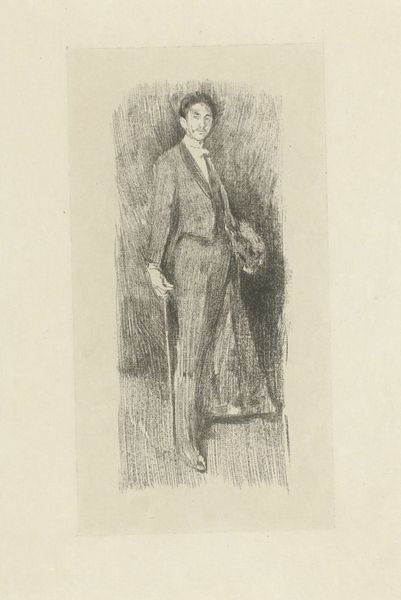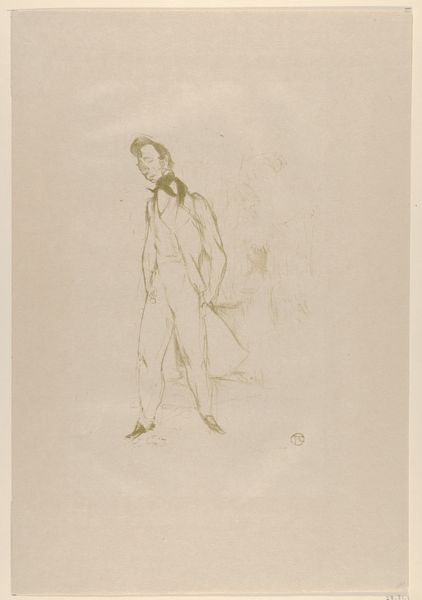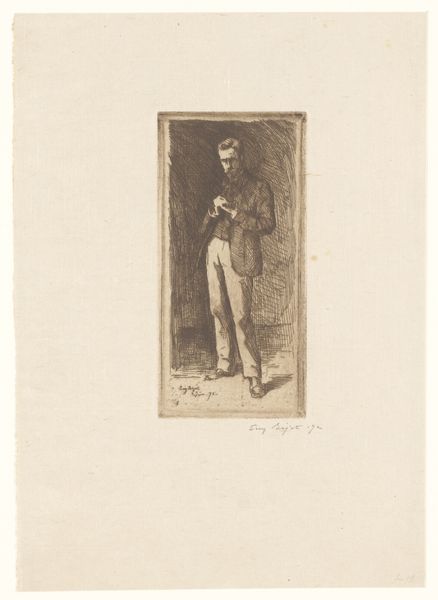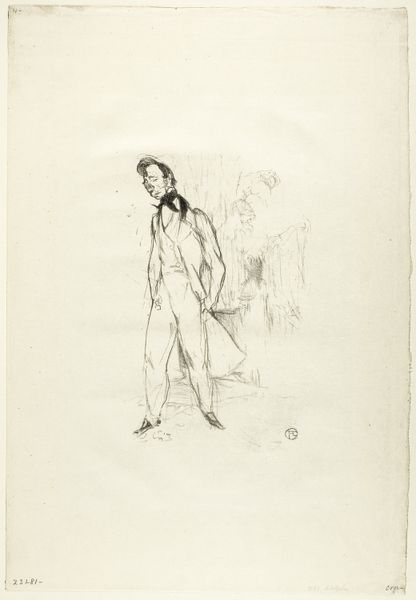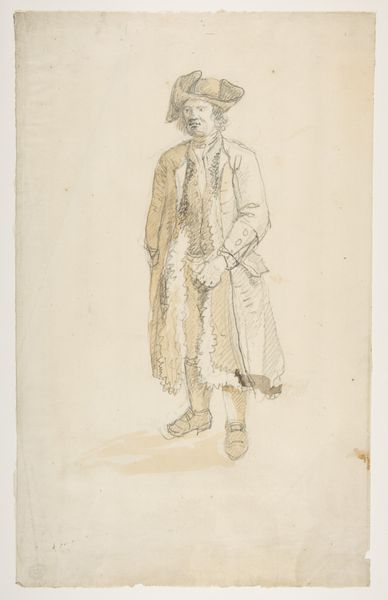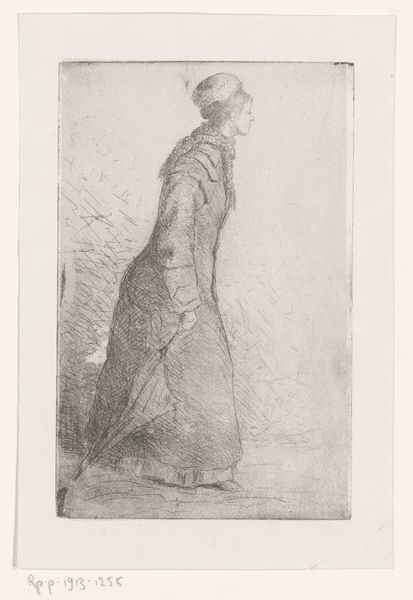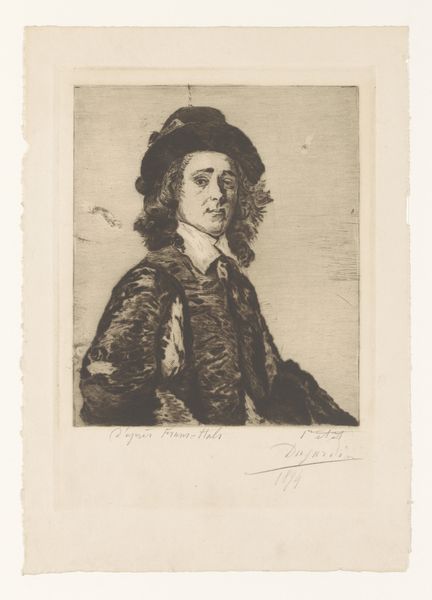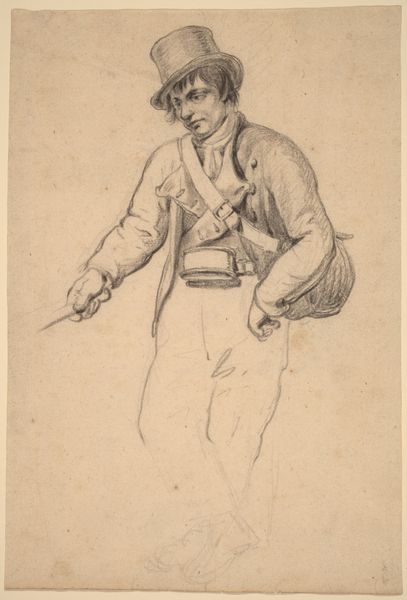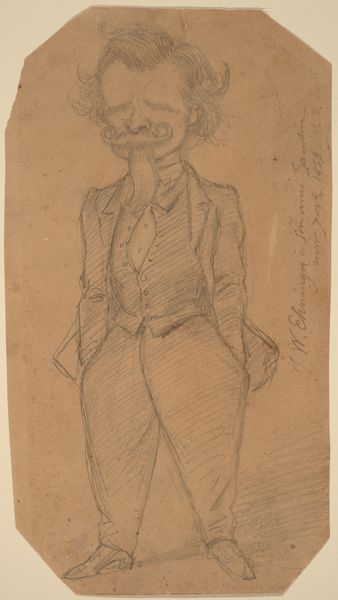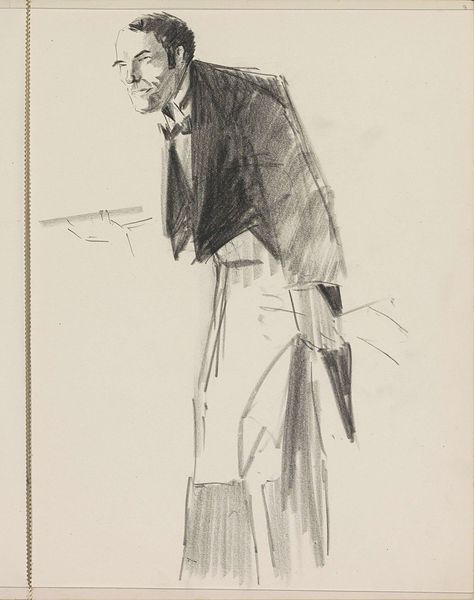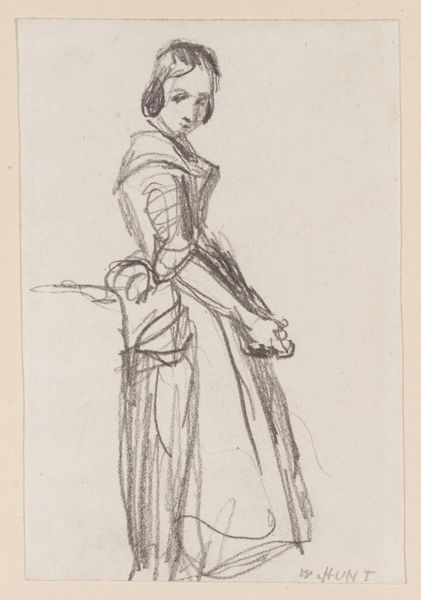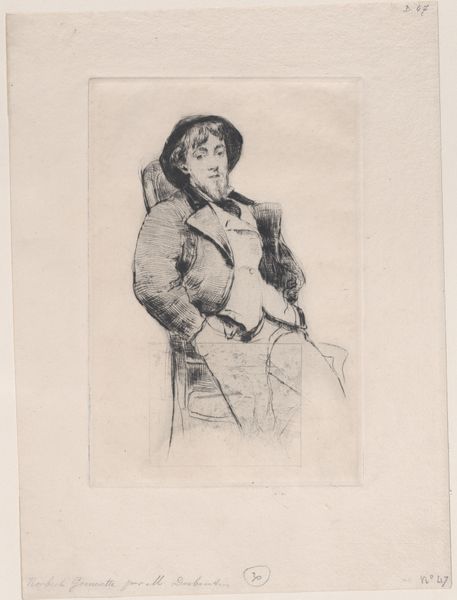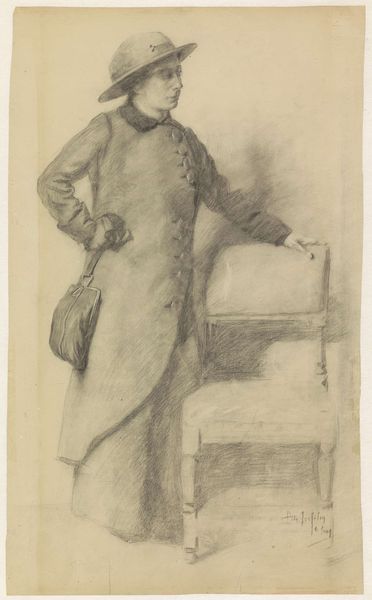
drawing, lithograph, print, etching, intaglio, paper, ink
#
portrait
#
drawing
#
lithograph
# print
#
etching
#
intaglio
#
figuration
#
paper
#
ink
#
pencil drawing
#
line
#
symbolism
Dimensions: 213 × 90 mm (image); 363 × 230 mm (sheet)
Copyright: Public Domain
Editor: This is "Count Robert de Montesquiou" by Beatrix Godwin Whistler, dating from 1894. It's an intaglio print on paper. It looks rather… fragile, almost ghostly. What strikes you most about this portrait? Curator: It's fascinating to consider this print within the context of late 19th-century debates around masculinity and aestheticism. Montesquiou himself was a prominent figure in the Decadent movement, known for challenging conventional notions of gender. Do you notice how Whistler uses a very delicate line? Editor: Yes, it seems almost ephemeral, like he could vanish any second. Curator: Precisely. This feathery quality can be interpreted as a deliberate move away from traditional representations of masculine strength and virility. He’s not presenting us with a robust, commanding figure, but something far more nuanced. Think about the queer coding present in literature and visual culture during this period; how does that inform your understanding of Whistler's choice of medium and line? Editor: It’s interesting to consider the frailty of the lines as a subversive act. He's disrupting these ideas of power with, literally, a light touch. Curator: Exactly. This work reflects shifting social attitudes and the burgeoning challenge to Victorian norms. It's a powerful statement rendered with the most delicate of means. The intentionality of "seeming fragile" makes a big difference. Editor: I see that subversion in a new way now. Thank you for making me rethink the possibilities that line, materials, and portraiture can do! Curator: It's important to understand that art is never created in a vacuum. Investigating the sociopolitical context can unlock a new vision of any artwork.
Comments
No comments
Be the first to comment and join the conversation on the ultimate creative platform.
